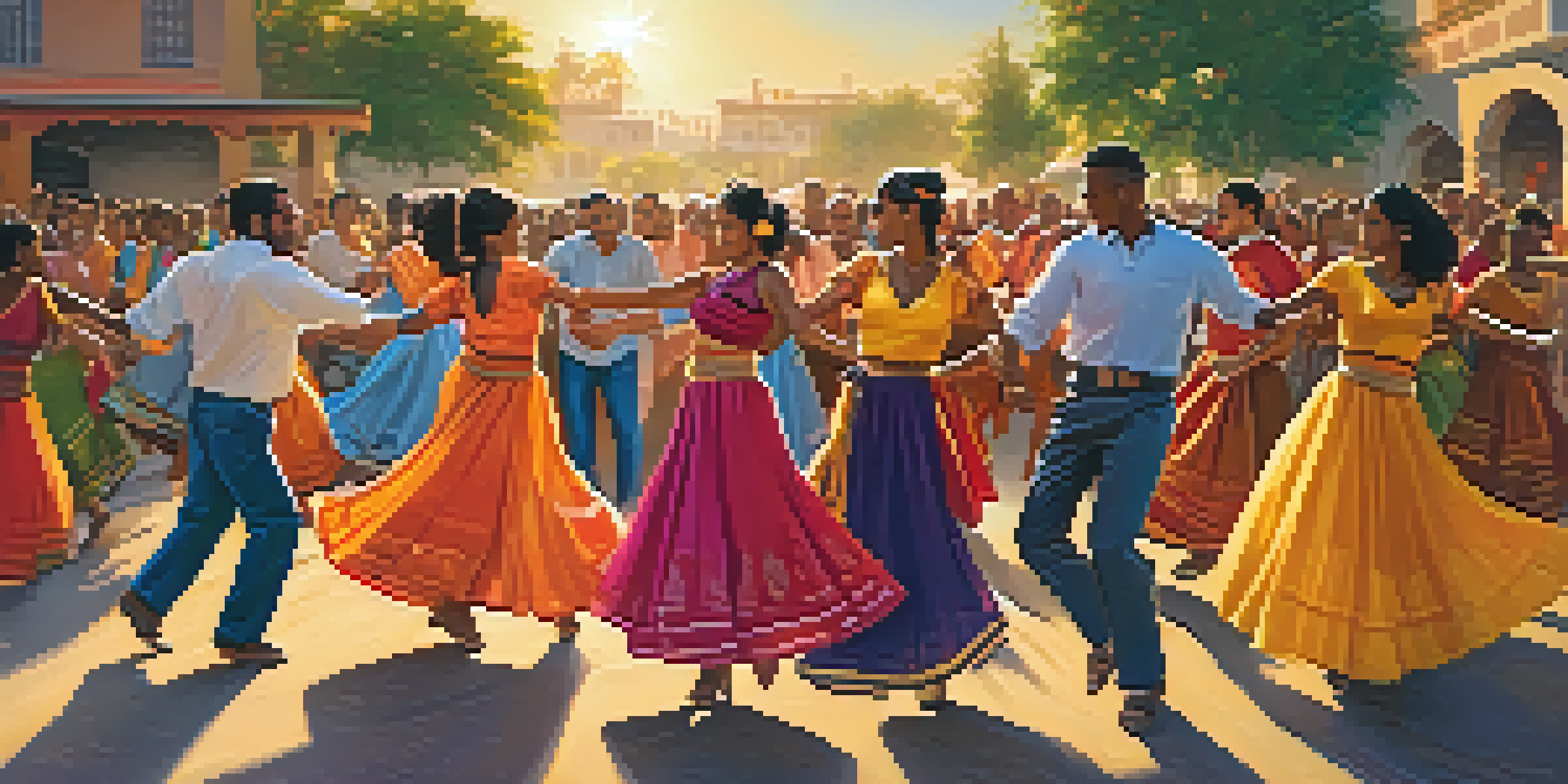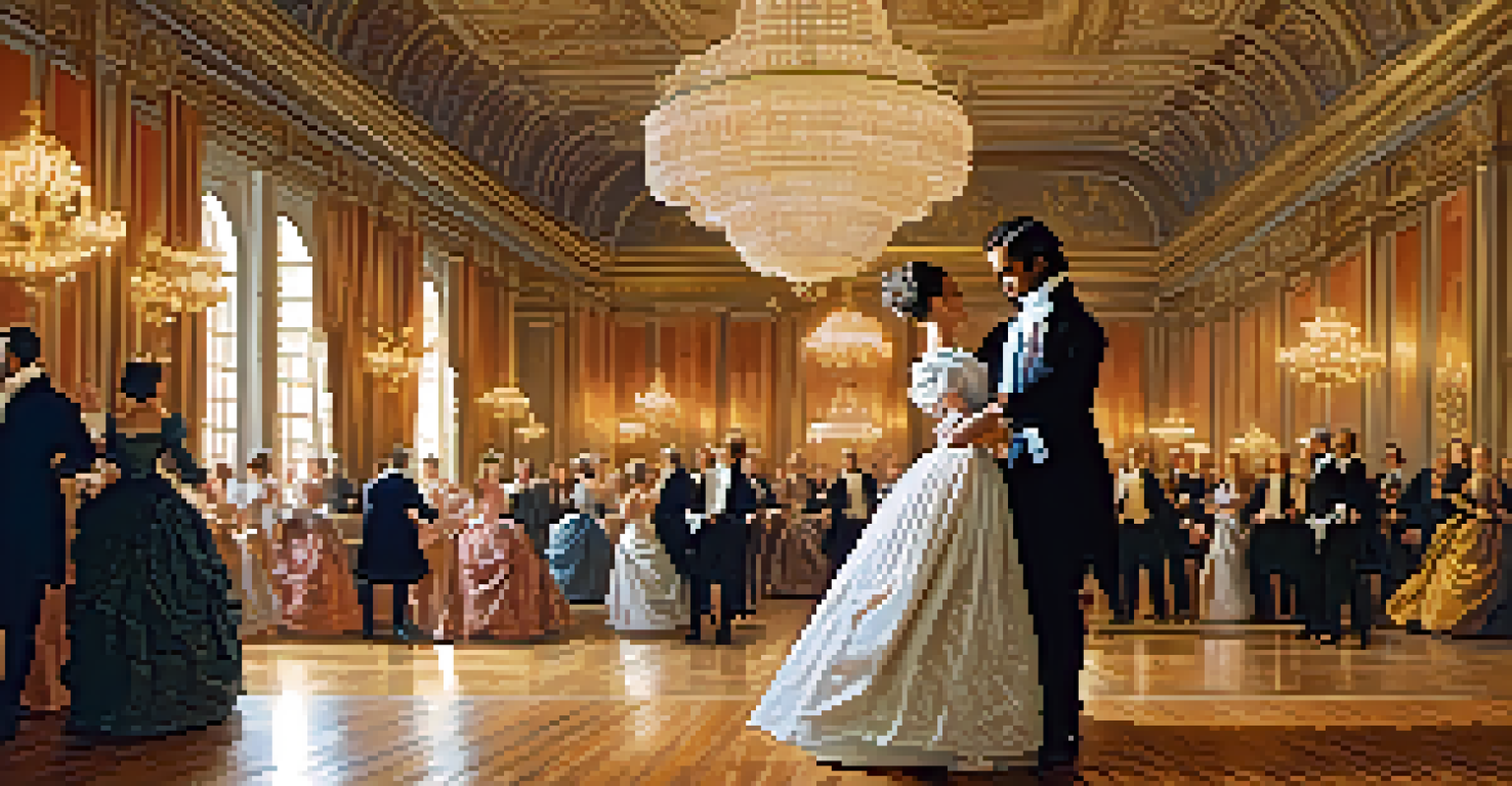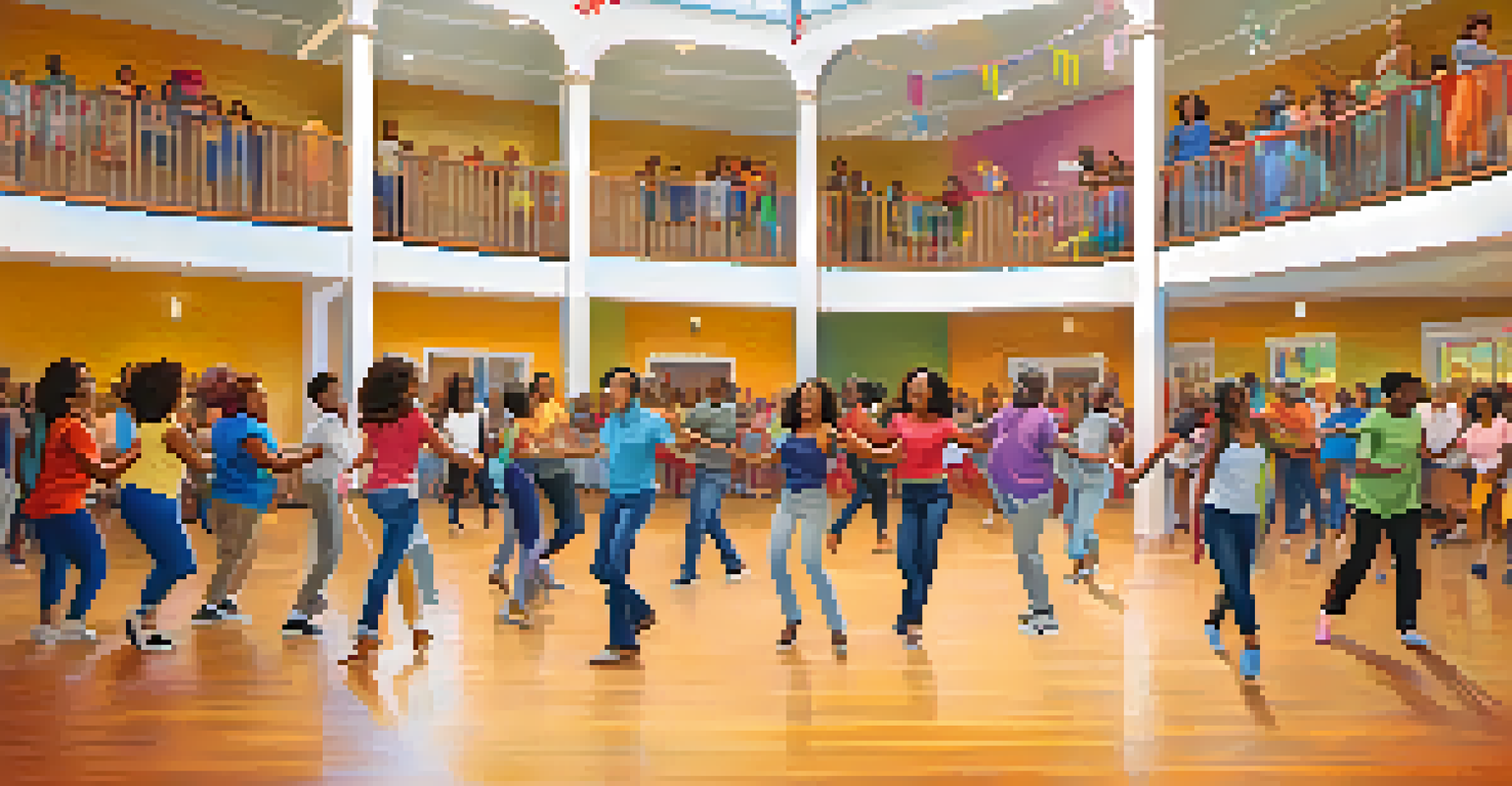The Cultural Significance of Social Dance Throughout History

The Roots of Social Dance in Ancient Societies
Social dance has deep roots, tracing back to ancient civilizations where it played a vital role in community gatherings. From the rhythmic movements of the ancient Greeks to the ceremonial dances of Indigenous tribes, these activities were more than mere entertainment; they served as a means of storytelling and cultural preservation.
Dance is the hidden language of the soul.
In many cultures, dance was intertwined with rituals and celebrations, reinforcing social bonds and shared identities. For example, the Egyptian hieroglyphs depict dancers in elaborate ceremonies, showcasing how integral dance was to their spiritual and social lives.
Thus, the origins of social dance not only highlight its importance in human expression but also demonstrate how these early practices laid the groundwork for the diverse dance forms we see today.
Dance as a Reflection of Social Hierarchies
Throughout history, social dance has often mirrored the hierarchies and power dynamics within a community. In the courts of Europe, for instance, dance was a way to demonstrate status, with elaborate balls showcasing the grace and style of the aristocracy, while common folk engaged in simpler forms.

This distinction was not merely aesthetic; it reinforced social classes and expectations. The waltz, with its intimate embrace, was initially met with scandal as it blurred the lines between social ranks, challenging norms of propriety.
Dance Reflects Cultural Identity
Social dance serves as a vital expression of community and cultural identity, intertwining with rituals and celebrations across various societies.
As societies evolved, so did the styles of dance, reflecting changing attitudes toward class and equality. Dances that once belonged to the elite gradually permeated into the broader culture, symbolizing the fluidity of social structures.
Cultural Exchange Through Dance
Social dance is a living tapestry woven from various cultural threads, often reflecting the influences of migration and trade. The fusion of styles, such as the African rhythms that contributed to jazz and the Latin beats that shaped salsa, showcases how dance evolves through interaction.
Dancing is like dreaming with your feet.
During the 19th century, the global movement of people brought about the blending of diverse dance forms, leading to the birth of new genres. For example, the Charleston emerged from African American communities, becoming a symbol of the Roaring Twenties and illustrating how cultural exchange fuels creativity.
This ongoing dialogue between cultures emphasizes dance as a universal language, breaking barriers and fostering understanding among different communities.
Dance in the Context of Social Movements
Social dance has frequently played a pivotal role in social and political movements, acting as a form of protest or expression. From the civil rights movement, where dance was a powerful tool for unity and resilience, to the LGBTQ+ community, which has used dance as a means of celebration and visibility, its impact is profound.
Dances like the 'Electric Slide' or the 'Macarena' became symbols of collective joy, while also serving as inclusive spaces for marginalized groups. These forms of social dance created a sense of belonging and identity, reinforcing community ties during challenging times.
Social Dance and Community Bonds
Engaging in social dance fosters connections and a sense of belonging, offering psychological benefits and reinforcing community ties.
In this way, dance transcends mere entertainment, becoming a powerful vehicle for social change and a means of advocating for justice.
The Role of Dance in Celebrations and Rituals
Across cultures, social dance is inseparable from celebrations and rituals, underscoring its significance in marking life's milestones. Whether it's a wedding, a festival, or a religious ceremony, dance serves as a joyful expression of community and cultural identity.
In many societies, specific dances are tied to particular events, such as the Hora in Jewish weddings or the Haka performed by Māori to honor guests. These dances not only enhance the experience but also reinforce cultural traditions and shared values.
Thus, social dance becomes a vital part of our collective memory, celebrating heritage while fostering connections among generations.
The Evolution of Dance Styles Over Time
As society changes, so too does the landscape of social dance, reflecting shifts in cultural norms and values. The transition from traditional dances to modern styles, such as hip-hop and contemporary dance, illustrates how dance adapts to the zeitgeist of each era.
In the 20th century, the rise of social dance clubs and the influence of technology, like television and the internet, further transformed how people engage with dance. Styles that were once confined to specific regions began to gain global popularity, breaking down geographical barriers.
Evolution Through Cultural Exchange
The evolution of dance styles illustrates how cultural exchange and globalization shape and redefine social dance in contemporary society.
This evolution demonstrates that social dance is not static; it continually redefines itself, mirroring the dynamic nature of culture and society.
The Psychological Benefits of Social Dance
Beyond cultural significance, social dance also offers numerous psychological benefits, fostering mental well-being and emotional expression. Engaging in dance can elevate mood, reduce stress, and enhance social connections, making it a therapeutic outlet for many.
Studies have shown that participating in group dance activities leads to increased feelings of happiness and belonging. The communal aspect of social dance encourages individuals to connect with others, combating feelings of isolation and loneliness.

In essence, social dance serves as a reminder of our shared humanity, providing spaces where joy, creativity, and collaboration can flourish.
The Future of Social Dance in a Globalized World
As we look to the future, the evolution of social dance is poised to continue in our increasingly globalized world. With the rise of social media and online platforms, dance styles from diverse cultures can reach audiences far beyond their origins, creating a melting pot of influences.
This accessibility allows for new forms of collaboration and innovation, as dancers from different backgrounds come together to create unique hybrid styles. However, it also raises questions about cultural appropriation and the importance of honoring the roots of these dances.
Ultimately, the future of social dance will hinge on our ability to celebrate diversity while fostering respect and understanding, ensuring that this vibrant art form continues to thrive.